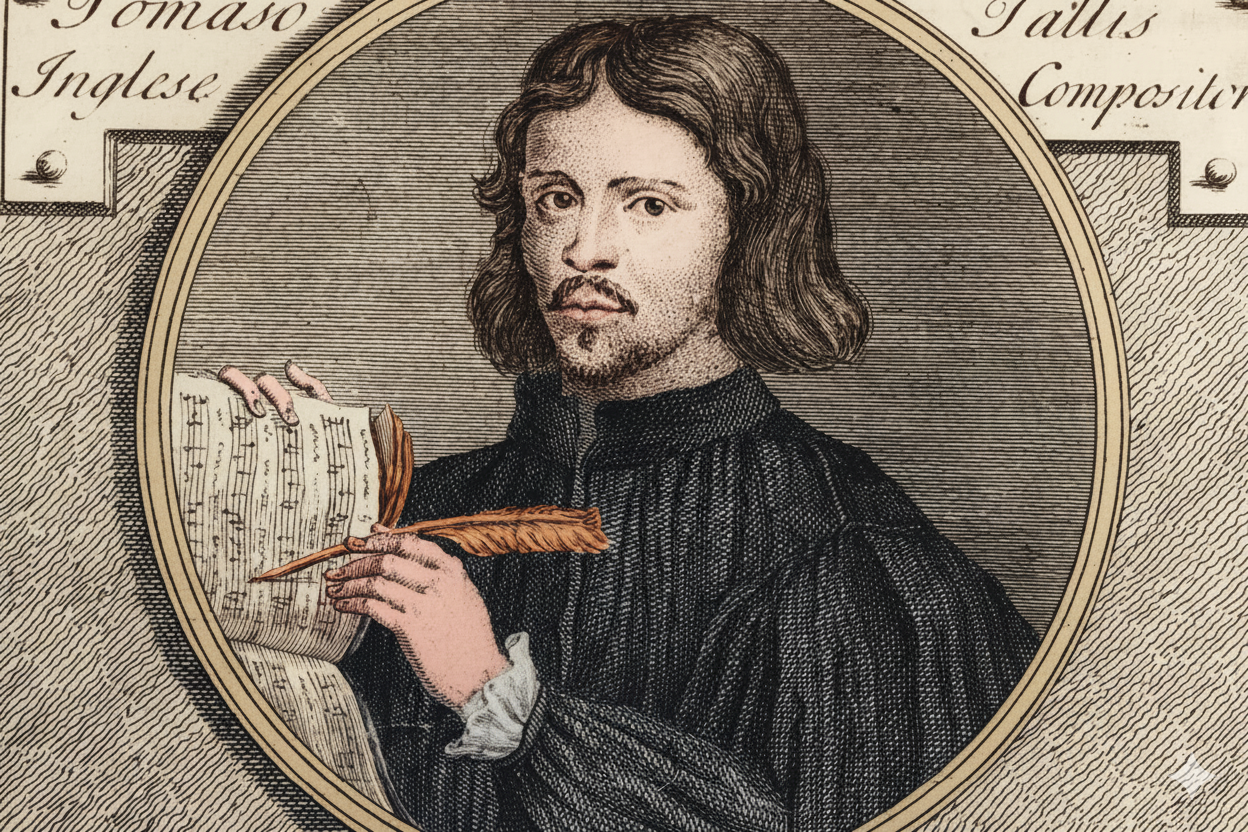Thomas Tallis
The Renaissance
Public domain (AI colorized)
Thomas Tallis was most likely born somewhere in County Kent in England during the reign of Henry Tudor. Records of his early life are few, but it seems he got an early and typical start as a singer and organist, and by the mid-1530s, he was working as a church musician in London. He left in 1538 to work at Waltham Abbey, an Augustinian (Catholic) monastery in Essex, which was almost immediately caught up in King Henry VIII's reformation and shut down. Tallis managed to depart with a copy of musical treatise by a composer named Leonel Power, which included the now-standard prohibition on parallel unisons, fifths, and octaves in voice leading.
Tallis secured a position at Canterbury Cathedral by 1540 and later the Chapel Royal. For the next forty years, he served in the courts of King Henry VIII, King Edward VI, Queen Mary, and Queen Elizabeth, keeping his post as England transitioned from Catholic to Protestant, back to Catholic, and again to Protestant. Tallis wrote liturgical music for the Anglican Church, including both homophonic choral works and service settings, as well as psalms and other liturgical music in English, along with music for keyboard.
He married a woman named Joan in 1553, but had no children. His most impressive accomplishment, and an honest testament to his skill as a composer, may have been holding down a church job as an unapologetic Roman Catholic throughout the entire English Reformation. Tallis' favor with the Queen was sufficient that in 1575, he and another English Catholic composer named William Byrd were granted letters patent giving them a monopoly on printing music and staff paper. Together, their favor with the queen was secure enough that they were even able to publish a set of choral motets in Latin.
His work is typical of the Renaissance polyphonic vocal style, although thanks to the resources available to him due to his association with the British Crown, some of his works are enormous in scale. His composition Spem in Alium, for example, is written for forty voices arranged into ten quartets.
Tallis died in 1585 at the age of 80 (in a time when average life expectancy was in the 30s.)
